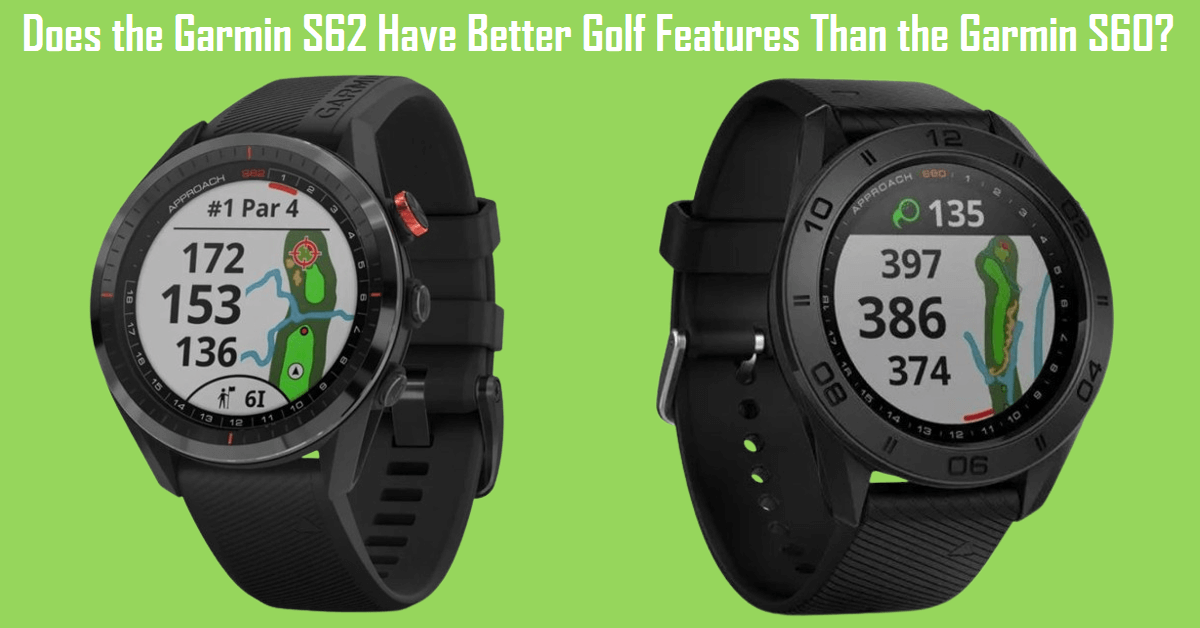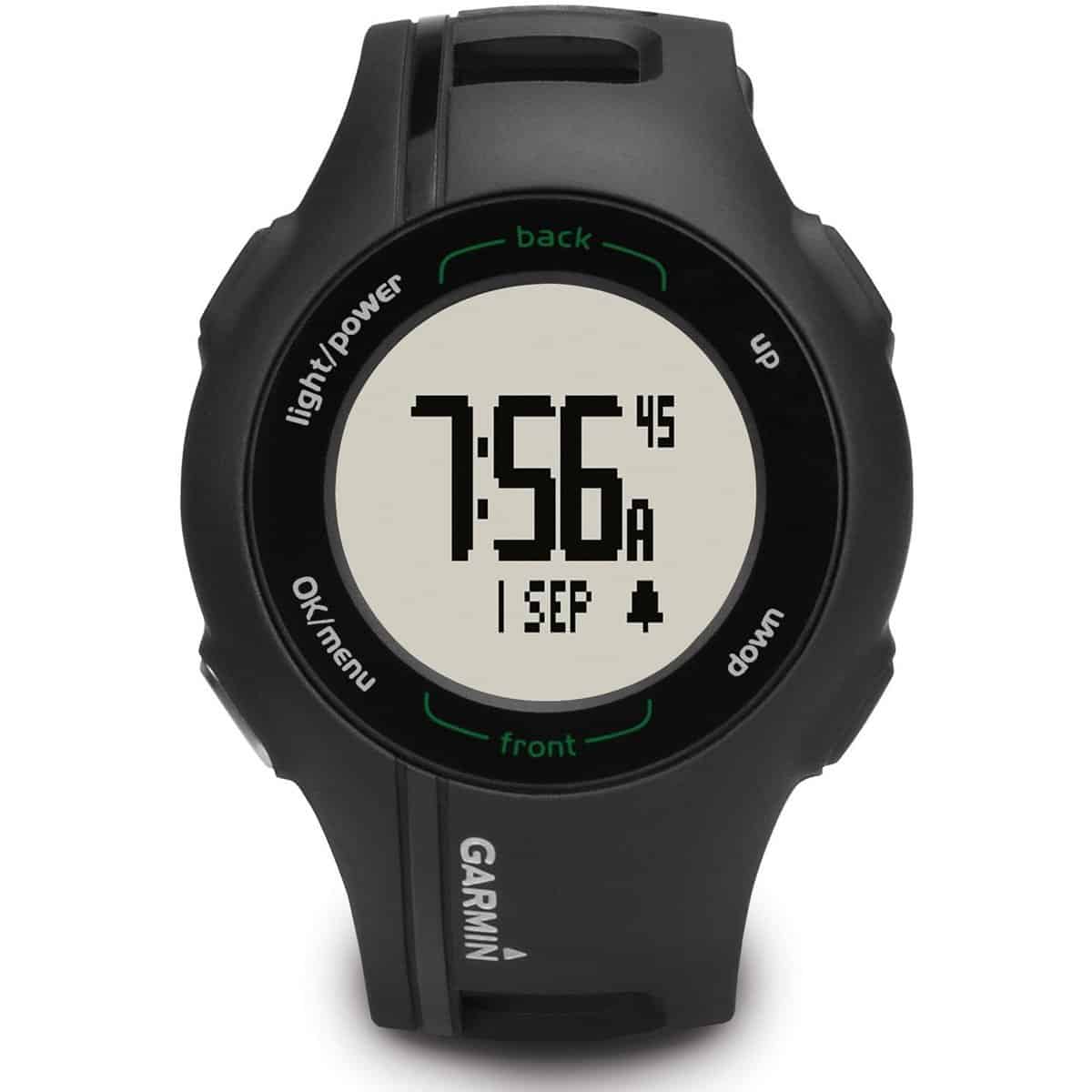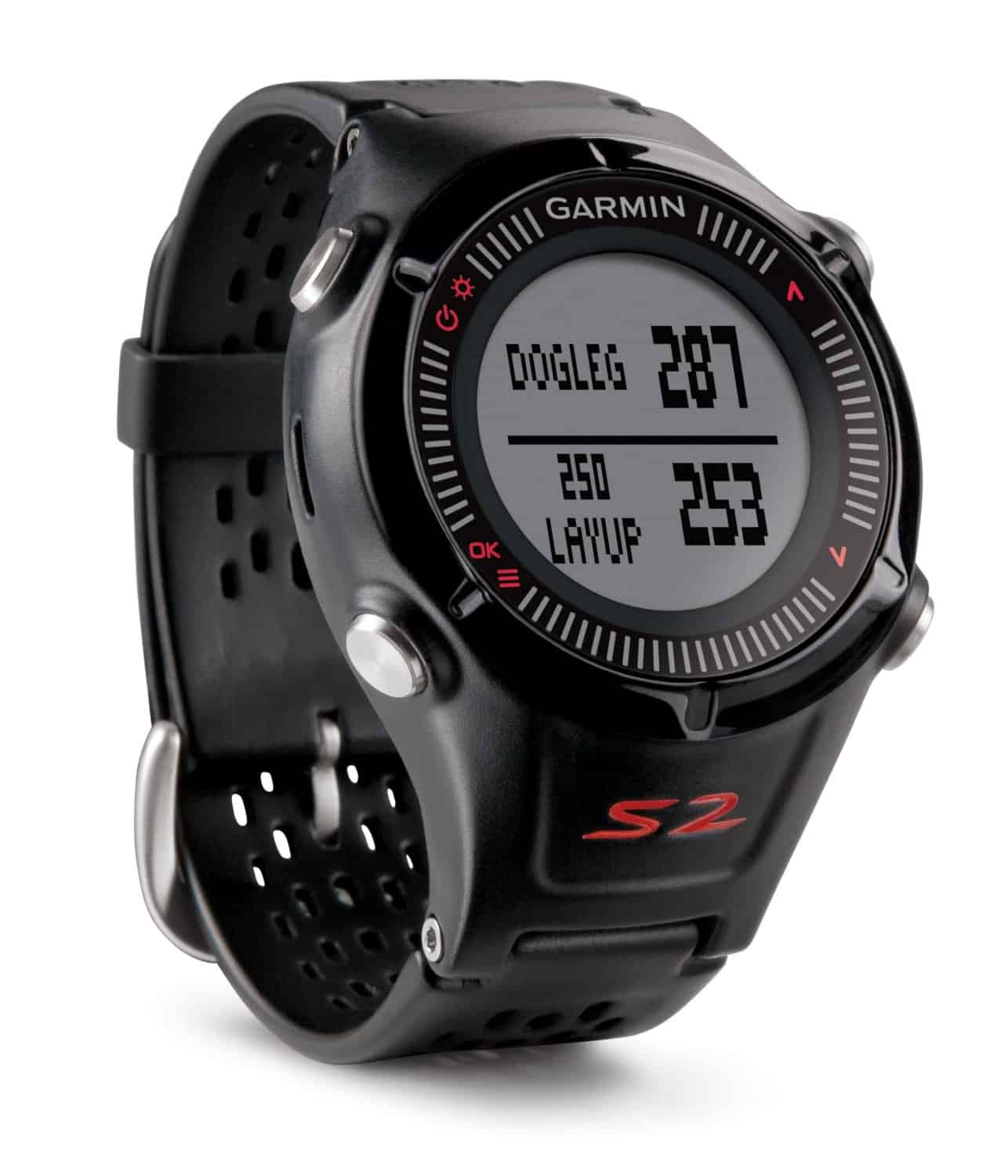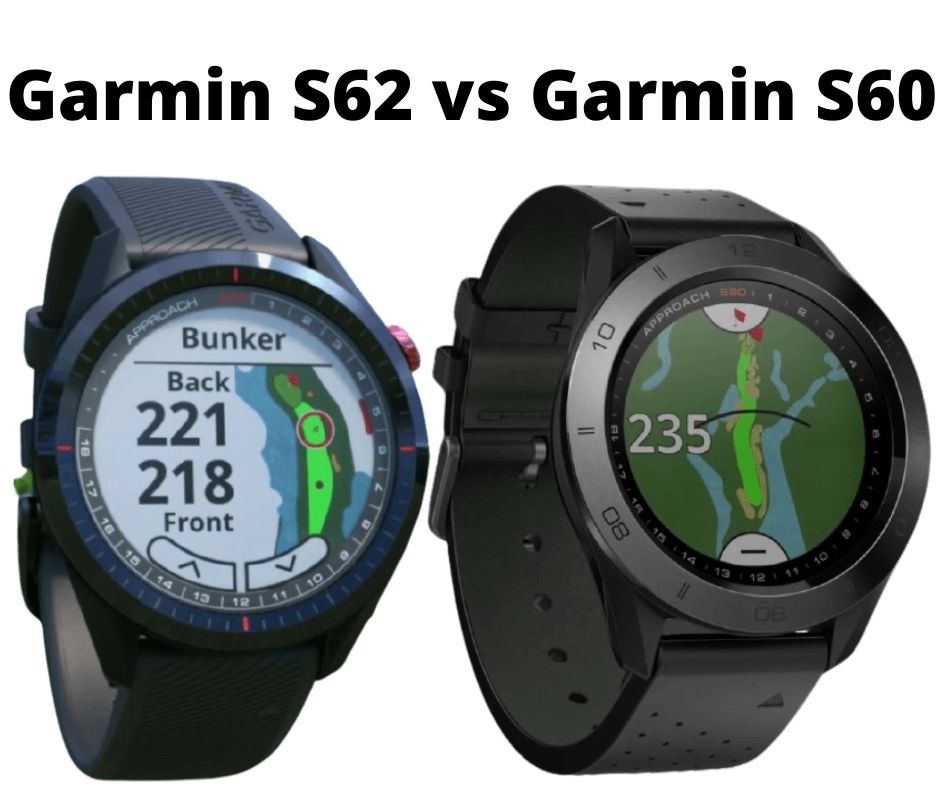Key Takeaways
- The Garmin S70’s Heart Rate Monitor provides me with a lot of useful heart rate-related metrics including my daily resting heart rate, heart rate zones I’m training at, calories burned based on the average heart rate during my workout, and my maximum heart rate and it will alert me if I have an abnormal heart rate.
- The Garmin S70 tracks more heart rate data than the Garmin S62 including underwater wrist-based heart rate, auto max heart rate, and heart rate variability status and it also tracks more training metrics including VO2 Max and Training Load, making it one of the best golf gps watches with a heart rate monitor. The Garmin s60 is $150 cheaper than the s62 but it lacks the virtual caddie and heart rate monitor of the s62 or s70.
- The heart rate monitor from the Garmin S70 golf gps watch can improve the gains you get from your cardio and strength training workouts.
Table of Contents
- 1 How to Use the Garmin S70’s Heart Rate Monitor to Improve Your Fitness
- 2 How the Garmin S70 Tracks Your Heart Rate
- 3 Comparing Garmin’s Chest Heart Rate Monitors
- 4 Examples of How the HRM-Pro Plus Chest Strap Improved My Training
- 5 Why Chest Straps Beat Wrist for Heart Rate Tracking Accuracy
- 6 Optimizing My Training with Heart Rate Zones
- 7 Optimizing My Cardio Training with Heart Rate Features
- 8 Optimizing My Strength Training with Heart Rate Tracking
- 9 Monitoring My Resting Heart Rate for Better Recovery
- 10 Additional Tips for Optimizing the Garmin S70 Heart Rate Features
- 11 Summary – How the Garmin S70 Heart Rate Features Have Upgraded My Training
How to Use the Garmin S70’s Heart Rate Monitor to Improve Your Fitness
I was happy when I got my hands on the new Garmin Approach S70 golf watch because I heard that it came with some great heart rate-related features that could optimize the gains from my workouts. With its built-in wrist heart rate monitor and compatibility with chest straps, this watch provides me with the valuable heart rate data I need to take my training to the next level.
I used to struggle with keeping my effort in the right zones during workouts, often pushing too hard on easy days and not hard enough on intense days. The S70 gives me constant, real-time heart rate monitoring so I can accurately gauge my effort. Now I can see at a glance when my HR drifts out of my target zone and adjust my pace accordingly. No more flying blind!
The S70 goes far beyond just activity tracking. It provides insights I never had before, like my daily resting heart rate trends, high/low HR alerts, and advanced running dynamics. I can even broadcast my heart rate to cycling computers and treadmills for more ways to train smarter. With all these features optimized for heart rate training, from customizable zones to underwater wrist-based monitoring, the S70 is the perfect tool to help me improve my fitness and take the guesswork out of effective training.
While I initially bought it for running and biking, I’ve found the swimming features incredibly useful as well. The S70 captures not just HR data but also stroke count, distance per stroke, and other metrics to quantify my effort in the pool.
In short, the Garmin S70 has become an indispensable tool for me to monitor and improve my fitness. If you’re looking to get serious about heart rate training across various sports, I highly recommend giving the S70 a try. It provides the feedback you need to work at the ideal intensity for your goals and maximize every workout. Just strap it on and let your heart rate guide you to better endurance and performance!
How the Garmin S70 Tracks Your Heart Rate
As an avid exerciser, having detailed heart rate data is crucial for me to optimize my workouts and track my fitness. The Garmin S70 provides excellent heart rate monitoring through both wrist-based sensing and compatible chest straps.
The S70 uses Garmin’s Elevate wrist heart rate technology to provide constant, every second readings right from your wrist. This allows me to get real-time feedback on my effort during activities without wearing a chest strap. The sensor uses LED lights to detect blood flow changes under the skin.
However, for even greater accuracy during intense training, the S70 also pairs wirelessly with Garmin chest straps like the HRM-Pro and HRM-Dual. When both wrist and chest heart rate are available, the watch intelligently uses the chest data for workouts. This gives me professional-level precision when I really want to dial in my effort.
These are several of the important heart rate features the S70 provides to help optimize my training:
| Feature | Available? |
|---|---|
| Wrist-based heart rate | Yes |
| Compatible with chest straps | Yes |
| Daily resting heart rate | Yes |
| Abnormal heart rate alerts | Yes |
Having my resting heart rate tracked every day helps me monitor my recovery and adapt my training accordingly. The watch charts my resting HR trends over time so I can see how I’m improving.
The abnormal heart rate alerts also give me peace of mind. I can set safe zones so the S70 will buzz if my heart rate goes too high or low during a workout or all day. This alerted me to an arrhythmia I wasn’t aware of!
By capturing my heart rate from both my wrist and chest straps, the S70 provides me with the detailed feedback I need to optimize and safeguard my training. I’ve already seen major gains in my fitness by zones using its heart rate tracking features. It’s an invaluable tool for any exerciser serious about improvement!
Comparing Garmin’s Chest Heart Rate Monitors
When I want maximum heart rate accuracy for intense training, Garmin offers three excellent chest strap options for me to choose from. Listed below is an overview of the important features and differences between the Garmin HRM-Pro Plus, HRM-Pro, and HRM-Dual chest straps:
Garmin HRM-Pro Plus
The HRM-Pro Plus is Garmin’s top-of-the-line heart rate strap and has all the bells and whistles:
-
Transmits real-time heart rate via bluetooth to Garmin s70 and other compatible devices
-
Supports heart rate variability (HRV)
-
Running dynamics metrics like cadence, ground contact time, etc.
-
Running pace and distance when paired with compatible Garmin watches
-
12-month battery life with tool-free battery door that makes changing the battery much easier
Garmin HRM-Pro
Very similar to the Pro Plus, but lacks the easy user battery replacement. Key features:
-
Transmits real-time heart rate via bluetooth to Garmin s70 and other compatible devices
-
Supports heart rate variability (HRV)
-
Running dynamics metrics like cadence, ground contact time, etc.
-
Running pace and distance when paired with compatible Garmin watches
-
12-month battery life
Garmin HRM-Dual
The most affordable option. Key features:
-
Transmits real-time heart rate via bluetooth to Garmin s70 and other compatible devices
-
Supports heart rate variability (HRV)
Main differences:
-
No running dynamics metrics
-
No pace/distance features
-
Longer battery life (3.5 years)
All three straps use ANT+ and Bluetooth to connect to devices, with no limit on ANT+ connections. The HRM-Pro Plus is the only one I’d recommend for triathletes and serious runners due to the running dynamics metrics. But the HRM-Dual is a great budget-friendly option for most exercisers.
| Feature | HRM-Pro Plus | HRM-Pro | HRM-Dual |
|---|---|---|---|
| Transmits real-time heart rate via bluetooth and supports heart rate variability (HRV) | Yes | Yes | Yes |
| Running Dynamics | Yes | No | No |
| All-Day Tracking | Yes | Yes | No |
| Battery Life | 12 months | 12 months | 3.5 years |
I personally use the HRM-Pro Plus for its accuracy and additional data during my training. But any of Garmin’s chest straps will provide far superior heart rate tracking compared to wrist-based sensors alone when paired with the S70.
One of my favorite features of the HRM-Pro Plus is the running dynamics metrics it provides, like cadence, ground contact time, and vertical oscillation. This helps you optimize your form.
The running dynamics metrics from the HRM-Pro Plus can tell you if your vertical oscillation is dangerously high, which can lead to knee pain, or if your cadence is too low, which can help you run faster with less injury risk.
Unfortunately, the Garmin s70 does not have the hardware to compute running dynamics. If you want a watch that will compute running dynamics, you will have to go with the Garmin Fenix 7 or Forerunner 965.
Examples of How the HRM-Pro Plus Chest Strap Improved My Training
Since I take my training very seriously, I need the most accurate heart rate data possible to optimize my training and racing performance. I initially relied solely on the wrist-based Elevate sensor in my Garmin S70 watch. It provided real-time feedback of my heart rate without wearing a chest strap, but I noticed some inconsistencies, especially during intense intervals.
That’s when I upgraded to using Garmin’s HRM-Pro Plus chest strap to get professional-grade heart rate tracking – and it made a huge difference in data quality and training effectiveness.
These are several specific examples of how the HRM-Pro Plus chest strap has improved my training:
-
I use heart rate zones for easy runs. The wrist monitor once showed my HR in Zone 2, but the chest strap revealed I was actually pushing too hard in Zone 3 – no wonder I was exhausted! This allowed me to dial back my pace, resulting in much better recovery runs.
-
During hill repeats, my wrist HR spikes to 190+ BPM, while the chest strap shows 170-175 BPM at peak effort – a crucial difference for targeting proper intensity.
-
In the pool, my wrist monitor loses signal every few laps and the heart rate data gets very sporadic. But my HRM-Pro Plus strap provides steady HR readings lap after lap throughout swim workouts for consistent data, letting me precisely quantify intensity of my swim workouts.
-
I thought my average heart rate for a recent 10K race was 175 BPM based on my wrist monitor. But the HRM-Pro Plus chest strap showed it was 168 BPM, indicating I can push harder in the next race.
The bottom line – switching from wrist to chest HR tracking has improved my training efficiency, reduced injury risk, and boosted race performance. My 5K race time is now 2 minutes faster and I’ve seen a 12% power increase on the bike. The chest strap accuracy has been an enormous upgrade for my fitness goals! I highly recommend it for any serious exerciser looking to maximize their workouts!
Why Chest Straps Beat Wrist for Heart Rate Tracking Accuracy
Here’s why chest straps provide such superior accuracy compared to wrist monitors:
-
Direct electrical signal from the heart – Chest straps detect heart’s electrical activity rather than relying on external LED lights and photodiodes.
-
Better and consistent sensor skin contact – The strap material maintains full skin contact during workouts unlike a sliding wristwatch. Since chest straps maintain skin contact and pick up electrical signals from the heart directly. This means fewer erratic readouts when I’m really pushing it.
-
No arm motion artifacts – Arm swing while running/swimming can reduce wrist sensor accuracy.
-
Advanced sensor technology – EKG-level precision from multiple electrodes and signal processing.
Optimizing My Training with Heart Rate Zones
One of the most valuable features of the Garmin S70 for me has been using heart rate zones to optimize my running and cycling workouts.
After originally just training by feel, I started tailoring my effort to specific HR zones and saw major fitness gains. The S70 makes it easy to stay in the ideal zones.
Here’s an overview of the different heart rate zones for training and how I use them:
Zone 1 (50-60% of max HR): This is my recovery zone. I aim to keep my easy runs and rides here to promote active rest. The S70’s Zone alerts buzz me if I accidentally push past Zone 1 into higher intensities. Keeping it mellow in Zone 1 allows me to recover properly between intense workouts.
Zone 2 (60-70% max HR): This is my primary training zone for longer aerobic workouts. Most of my base runs and endurance rides are in Zone 2. I’ve noticed staying in this zone has dramatically improved my cardiovascular endurance over time. My 10K time has dropped by over 3 minutes through Zone 2 training!
Zone 3 (70-80% max HR): For tempo runs and lactate threshold bike sessions, Zone 3 pushes me into highly productive intensities. I can only sustain Zone 3 for 20-30 minutes at most, but it builds speed and power. The S70 alerts me when I hit Zone 3 so I know to pick up the pace.
Zone 4 (80-90% max HR): I reserve these tough interval intensities for 1-5 minute periods in track workouts and bike/swim intervals. It’s rewarding to see my HR spike into Zone 4 on the S70 display and know I’m really redlining it to boost fitness.
Zone 5 (90-100% max HR): All-out! I only reach Zone 5 at the very end of 5K races or cycling sprints. It’s not sustainable, but pushing to the max helps increase my lactate tolerance.
Thanks to the S70, I now have a guide to the proper training intensities for my goals. My fitness improves much faster when every workout hits the right heart rate zones!
Optimizing My Cardio Training with Heart Rate Features
The Garmin S70 has been invaluable for optimizing all my cardio workouts from running and cycling to swimming and indoor training. The real-time heart rate data and alerts help ensure every session keeps me in the ideal zone to boost endurance and burn fat.
These are several examples:
Targeting Tempo Runs: I use the S70’s customizable heart rate alerts to lock into Zone 3 (170-180 BPM) for tempo runs. When it buzzes after hitting 170 BPM, I know I’ve reached the lactate threshold intensity I want to sustain for 15-20 minutes. This builds my speed and economy without overtaxing my body. I’m now able to comfortably maintain a pace 1 minute/mile faster than before!
Interval Training: When doing track repeats, I set the upper HR alert for Zone 4 at 180 BPM. This alerts me to push into the intense anaerobic zone for 60-90 seconds during the intervals. Then I recover back down to Zone 2 (140-155 BPM) during the jogging rest, as indicated by the S70. My overall 5K time has improved by over 1 minute through this precisely timed interval training.
Cycling Classes: During intense spinning classes, I pick an overall Zone 2 HR range of 140-160 BPM to keep me in an endurance intensity for fat burning. When my HR drifts below 140, I turn the resistance control knob clockwise to increase the resistance to get back into the aerobic sweet spot. This has allowed me to burn 15% more calories per class.
Open Water Swimming: It used to be impossible to gauge effort while swimming in the lake without a pace clock. But now my S70 provides real-time HR feedback underwater, so I can ensure I’m training in Zone 2 (65-75% max HR) for distance rather than sprinting and burning out.
Race Simulation: I create custom workouts on Garmin Connect that simulate my target race effort and heart rate. This prepares me mentally and physically for the demands of competition. My last race went perfectly!
| Feature | S70 Capability |
|---|---|
| HR Alerts | Yes |
| Custom HR Zones | Yes |
| Underwater HR | Yes |
I’ve achieved huge PRs thanks to dialing in the optimal heart rate zones consistently during every activity. The S70 helps me get way more benefit from my cardio training and avoid “junk mileage!”
Optimizing My Strength Training with Heart Rate Tracking
While heart rate training is often associated with cardio, I’ve found the Garmin S70 extremely useful for optimizing my strength workouts too.
Being able to monitor my heart rate spikes and recovery during resistance training helps me gauge intensity and progress over time.
These are several examples:
Interval Strength Circuits: I create HIIT circuits that alternate between strength moves like squats, burpees, and planks and then active recovery like jogging or cycling in place. The S70 shows my HR spiking up to 180+ BPM in Zone 4 during the intense intervals, then rapidly dropping back down to 120-130 BPM in Zone 2 during recovery. This guides me in timing the intervals for maximum effectiveness.
Rep Targets: During sets of bicep curls, I’ll rep until my HR rises from 140 BPM to 160 BPM in Zone 3 on the S70, indicating I’ve sufficiently fatigued my muscles. Then I’ll rest until my HR returns to my Zone 1 baseline of 90-100 BPM before the next set. This has allowed me to double my volume and see significant muscle growth.
Comparing Workouts: Over a month of strength training, I’ve used the S70 to compare average and max HR between similar sessions. I can see my cardiovascular endurance steadily improving as my HR takes longer to spike during sets and recovers back to baseline faster between sets. This allows me to lift heavier and harder.
Active Rest: On dedicated rest days, I’ll wear the S70 to ensure my HR hovers below 100 BPM in Zone 1 with only light activity. This helps me avoid overtraining by quantifying my recovery. I’m no longer as sore thanks to optimized rest.
| Feature | Benefit |
|---|---|
| Heart rate tracking | Precisely quantify intensity and recovery |
| All-day HR monitoring | Ensure proper low-intensity rest days |
| HR history | Track fitness improvements over time |
Applying heart rate tracking principles to strength training has allowed me to supercharge my programming, effort, and results. The S70 provides insight into workload and recovery that was previously only accessible to pro athletes!
Monitoring My Resting Heart Rate for Better Recovery
One of the most useful features of the Garmin S70 for me has been its ability to passively track my resting heart rate throughout the day and night. This provides invaluable insight into my recovery status and aids in planning optimal training.
24/7 Tracking: The S70 uses its wrist-based Elevate sensor to record my resting HR around the clock, not just during workouts. It averages these readings over time to quantify my true resting rate while sleeping, lounging, and going about my day.
Recovery Insights: I can view resting HR trends in the Garmin Connect app to see how it changes in response to hard training and life stresses. When my resting HR sustains 3-5 BPM above baseline, I know I need more recovery before intense training to avoid burnout or illness. Dips below baseline indicate I’m well-recovered.
Injury Risk: I once noticed a steady rise in my resting HR from 55 up to 62 BPM over several days – a clue I was overtraining. I dialed back my running volume, and soon after developed knee pain. Catching overtraining early by monitoring resting HR helps me avoid injuries.
Fitness Gains: As my cardiovascular fitness improves with consistent training, my resting HR gradually decreases over months and years. It’s incredibly rewarding to look back and see my resting rate now 8 BPM lower than a few years ago, dropping from 65 down to 57 BPM thanks to increased aerobic endurance.
HRV Monitoring: The S70 also tracks heart rate variability (HRV) in addition to resting HR. Higher HRV values indicate positive recovery of the nervous system and readiness to absorb hard training. I use this metric along with resting rate to guide my training load and avoid burnout.
| Feature | Benefit |
|---|---|
| 24/7 resting HR tracking | Precise insights into recovery status |
| Resting HR trends | Identify overtraining risk before injury |
| Heart rate variability data | Further quantify nervous system recovery |
Monitoring indicators like resting heart rate allows me to balance training stress and rest for better fitness. The S70 gives me access to powerful recovery metrics like the pros!
Additional Tips for Optimizing the Garmin S70 Heart Rate Features
In addition to the major heart rate tracking capabilities covered already, listed below are some other tips and features I’ve found useful for getting the most out of the S70 for training:
Broadcasting Over ANT+: I can broadcast my heart rate data from the S70 watch to external devices like cycling computers, treadmills, and gym equipment over ANT+ connectivity. This allows me to train based on my heart rate even without wearing a chest strap.
Battery Savings: While I love the 24/7 heart rate monitoring, it does drain the S70’s battery life faster. For long hikes or vacations where I won’t be training much, I’ll disable the all-day tracking in the settings to extend battery life.
Wrist Position: For the most accurate wrist-based heart rate, I try to wear the S70 about 2 finger widths above my wrist bone and ensure a snug fit. This gives the Elevate sensor better skin contact during workouts.
Troubleshooting: On rare occasions, I have to reboot the S70 to reconnect the wrist sensor if the heart rate reading seems off or frozen. I also moisten the electrodes on my chest strap to get a strong signal if needed.
Custom Data Screens: I can set up custom data screens on the S70 to show different HR metrics like current zone, average HR, lap HR, etc. This allows me to view the most relevant data during my workouts.
| Feature | Benefit |
|---|---|
| ANT+ broadcasting | Use HR for external training without chest strap |
| Disable all-day HR | Conserve battery life when not training |
| Optimal watch placement | Enhance wrist HR accuracy |
Optimizing these little tips and settings helps me get the most out of the S70’s exceptional heart rate training capabilities. This watch has truly been a game changer for improving my fitness!
Summary – How the Garmin S70 Heart Rate Features Have Upgraded My Training
In this post, I’ve covered how the Garmin S70’s extensive heart rate tracking capabilities have vastly improved my running, cycling, swimming, and strength training.
Here’s a quick recap of the important benefits I’ve experienced:
-
More consistent heart rate data compared to wrist-only sensors, especially during intense intervals and races thanks to compatibility with chest straps like the HRM-Pro Plus. This accuracy is crucial for effective training.
-
Ability to precisely monitor my effort in real-time and hit specific heart rate zones for different training goals – aerobic endurance, tempo work, intervals, active recovery, etc. My fitness has skyrocketed through zone-guided training.
-
Insight into my cardiovascular fitness via resting heart rate trends and heart rate variability. This helps me balance training and recovery to avoid overtraining injuries and burnout.
-
Underwater heart rate monitoring during swimming workouts allowing me to quantify intensity in the pool rather than just guessing.
-
Broadcasting heart rate to cycling computers and equipment for zone training even without wearing a chest strap.
The bottom line is that heart rate training has upgraded my workouts from guesswork to having accurate, real-time feedback and data. I’ve seen huge gains in endurance and performance across sports since adopting the S70. It’s provided me with insights previously only available to serious athletes with coaches.
If you’re looking to get much more dialed in with your training intensity and recovery, I highly recommend considering the S70 or any Garmin device with similar heart rate features. Let your heart rate be your guide to hitting fitness goals you didn’t think possible!




